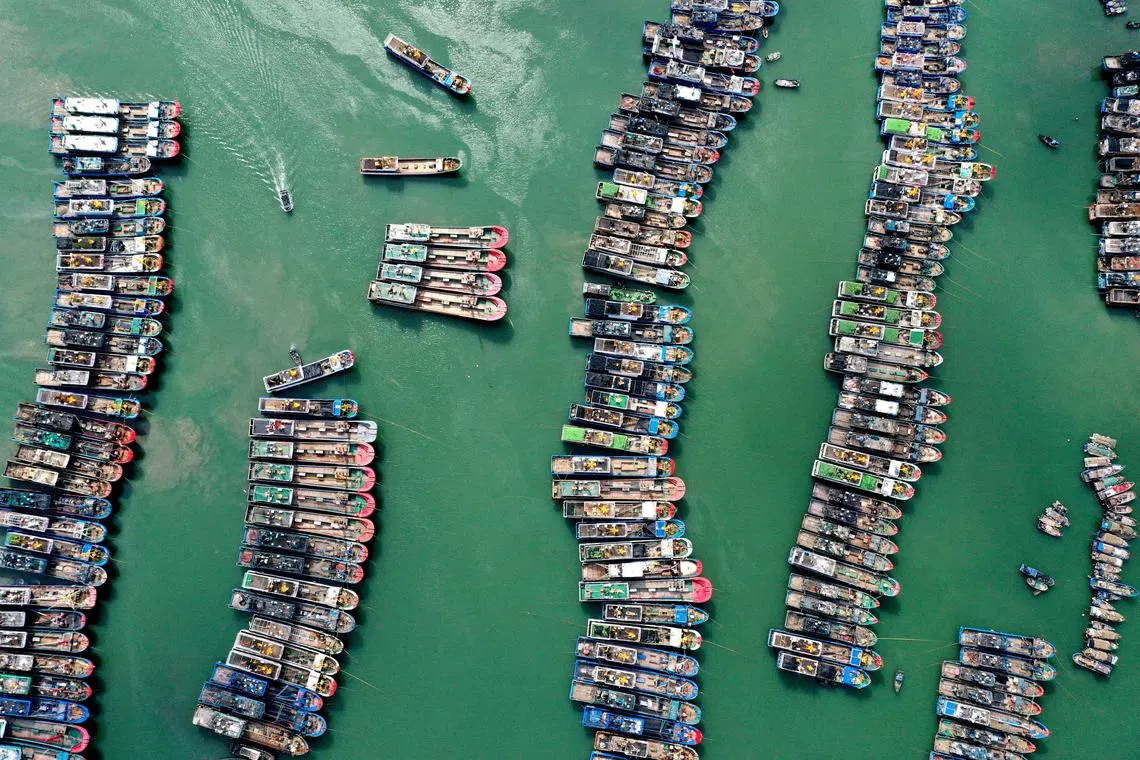Typhoon Gaemi hits Chinese seaboard, sinks freighter off Taiwan
Sign up now: Get insights on Asia's fast-moving developments

The storm is expected to bring more rain across Taiwan, with offices and schools closed for a second day on July 25.
PHOTO: REUTERS
Follow topic:
BEIJING/TAIPEI – Typhoon Gaemi roared into south-eastern China on July 25 after sweeping across Taiwan, where it killed three people, triggered flooding and sank a freighter before barrelling west across the Taiwan Strait.
The typhoon, the biggest to hit China’s eastern seaboard in 2024, made landfall at 7.50pm in Fujian province, state broadcaster CCTV said.
The storm is forecast to unleash intense rainfall over much of China after fuelling severe weather from the Philippines to Japan’s Okinawa islands with its giant cloud bands, which spanned most of the western Pacific Ocean.
In Taiwan, the strongest typhoon to hit the island in eight years packed gusts of up to 227kmh before weakening as it made its way across the island, according to the Central Weather Administration.
Some parts of southern Taiwan have recorded accumulated rainfall of 2,200mm since July 23. The storm cut power to about half a million households, though most are now back online, said utility company Taipower.
Chinese weather forecasters said Typhoon Gaemi will pass through Fujian and head inland, gradually moving northwards with less intensity. But weather forecasters are expecting heavy rain in many areas as it tracks north.
Three people died and 380 were injured because of the typhoon in Taiwan, the government said, as the storm made its way across the island.
Taiwan’s fire department said a Tanzania-flagged freighter with nine Myanmar nationals on board had sunk off the coast of the southern port city of Kaohsiung and there had been no response from the crew. Search efforts were ongoing, it added.
Taiwanese television stations showed pictures of flooded streets in cities and counties across the island.
Ms Li Li-chuan, 55, saw the roof of her restaurant blow off in the north-eastern Taiwanese city of Suao.
“I was frightened,” she said. “It was the strongest in years. I was worried that the roof would hit other people.”
Offices and schools as well as the financial markets closed for a second day on July 25, while train services were stopped until 3pm, and all domestic flights and 195 international flights were cancelled.
Ahead of Gaemi’s arrival, China’s governing Communist Party’s top decision-making body held a meeting to discuss flood prevention and disaster relief, while the Transport Ministry upgraded its typhoon response to level 2, state media said.
Local officials stepped up warnings in the coastal provinces of Fujian and Zhejiang.
In Fujian, government officials have relocated about 150,000 people, mainly from coastal fishing communities, the state media reported.
As gale-force winds picked up, officials in Zhoushan in Zhejiang province suspended passenger waterway routes for up to three days.
Most flights were cancelled at airports in Fuzhou and Quanzhou in Fujian, and Wenzhou in Zhejiang, according to the VariFlight app.
Guangzhou rail officials suspended some trains that would pass through typhoon-affected areas, according to CCTV.
Meanwhile, north China is experiencing heavy rain from summer storms around a separate weather system.
Torrential rain has caused mudslides in China’s south-west Sichuan province, leading to the evacuation of 288 people from a popular scenic spot, according to state media.
Farther north, some areas in Beijing experienced heavy rain and emergency plans were activated, with more than 25,000 people evacuated, according to Beijing Daily.
Some train services were also suspended at the Beijing West Railway Station. REUTERS

